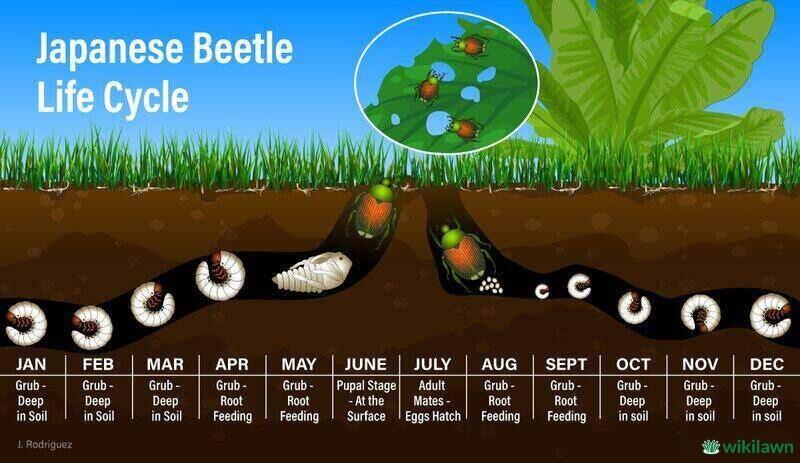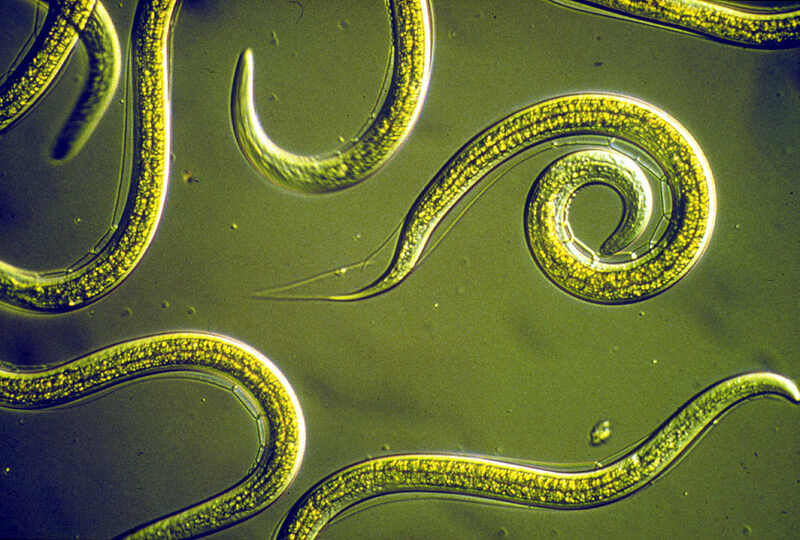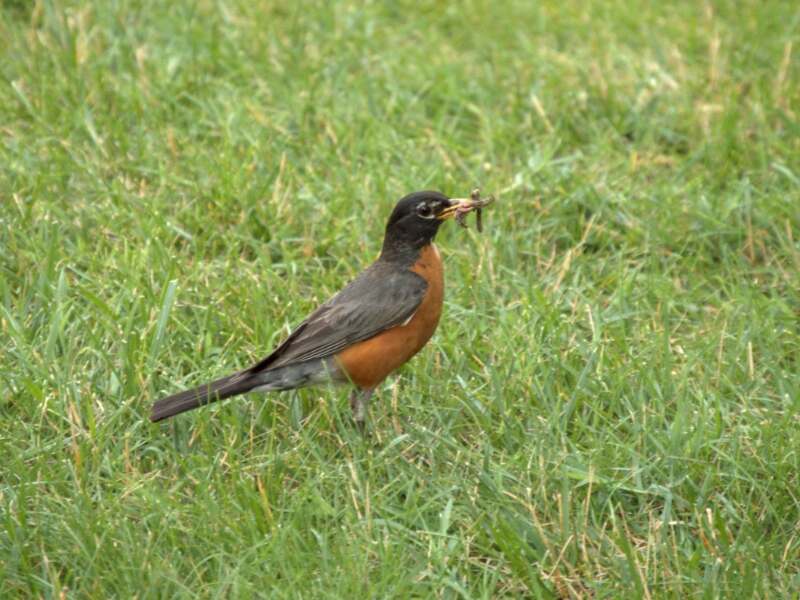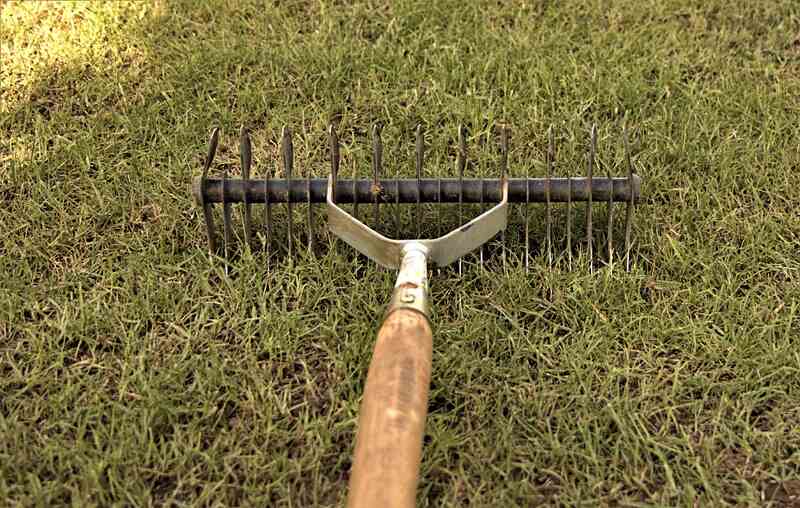How to Get Rid of Grubs in Your Lawn
BY LASHONDA TUCKER | AUGUST 7TH, 2023 | HOME & GARDEN, LAWN CARE, PESTS AND DISEASESLawn grubs are a part of the ecosystem. And, of course, we want to preserve the ecosystem. But too much of anything can be a bad thing. Grub worms become a problem when there is a large grub population. They eat grass roots, weakening the bond between the grass and roots and ultimately killing the grass. This article tells you how to get rid of grubs in your lawn using natural methods and conventional chemicals.
What are Grubs and Their Life Cycle?
Grubs are the larvae of beetles like June bugs, Japanese beetles, and June beetles. After the beetles lay eggs, they hatch into larvae that feed on grass roots and need moisture to survive. They are slimy-looking, squishy, and C-shaped, with legs close to their brown heads.

Infographic by Juan Rodriguez
The eggs hatch, and the white grubs become active in the spring and summer. In the fall, they feed and tunnel further into the soil for protection against upcoming winter weather.
Grubs do more than make your grass look unhealthy. By weakening the bond between the grass and grass roots, grubs cause your grass to become unstable. When pulled, patches of grass come up easily and roll up like a carpet. Grass will quickly die once the roots are severed.
Signs You May Have a Lawn Grub Problem
There are a few telltale signs of lawn grubs, like increased animal activity, as critters like skunks and raccoons flock to your yard to feed on the grub worms.
White grubs dig into grass roots and cause dead patches. Multiple dead patches that do not improve can be a sign of a grub infestation. Although brown patches can be a sign of lawn disease or drought, they are also a major indicator that grub control may be needed if the grass pulls up easily. Remember, patches of grass will roll up like carpet if there is grub damage.
Before you start the process to get rid of grubs, test your yard to make sure grubs are the problem:
— In the suspected area, dig up 1 square foot that is about 3 inches deep.
— If you see 5 or fewer grubs, your lawn is normal. Treatment is unnecessary.
— Unhealthy grass will require grub control if there are five to 10 grubs in a single square foot.
— If you see more than 10 grubs, your infestation qualifies as severe, and you may need professional help to treat it.
Natural Ways to Get Rid of Grubs
You can kill grubs without injuring beneficial insects by using organic methods. Natural treatment can take several years, but you, your loved ones, and the environment will be safer for it.
Beneficial Nematodes

Photo Credit: CSIRO / Wikimedia Commons / CC BY 3.0
These microscopic worms are natural parasites that kill grubs by releasing bacteria. They naturally live in the soil. Homeowners can purchase them at retailers like Walmart and even online from Amazon. Use them soon after purchase, before they die. Water the grass before and after you release the beneficial nematodes into the lawn. The best time to apply the worms is in the afternoon.
Milky Spore
Milky spore comes in powder form and can be sprinkled on the lawn. It is a bacterial disease that only kills Japanese beetle grubs. It can take many years for this bacterium to get rid of grubs.
Typically, milky spore can be purchased at the same locations as beneficial nematodes. You can find them online at Home Depot and Amazon.
Neem Oil
Homeowners can control grubs with a DIY neem oil solution. Neem oil naturally contains ingredients that act as pesticides, like Azadirachtin.
Recipe and Directions. Mix 1 teaspoon of pure Castile soap with 1 gallon of warm water. Add 2 tablespoons of raw 100% cold-pressed neem oil. Place the mixture into a spray bottle. Spray your lawn weekly until the grubs are gone, or the population is reduced to a normal level. Apply at dawn or dusk to keep from harming beneficial insects.
Birds

Photo Credit: Anmol Dash / Canva Pro / License
Grubs are tasty little treats for birds like bluejays and robins. Put out birdhouses, birdbaths, and food for birds to attract them to your yard. They will eat your grub problem away while you sit back and watch.
Drought
If you’re in an area where you experience droughts in the summer, take advantage of it. Dry out the soil even more by not watering your grass for three to four weeks. Since beetle eggs need moisture to live, drought will act as a natural pesticide and kill the eggs. The dry soil will decrease the subsequent year’s grub population.
Some grass types are more drought-tolerant than others, but most healthy lawns will green up when you start re-quenching the grass’s thirst.
Conventional Chemical Ways to Get Rid of Grubs
Conventional grub control products, like other conventional lawn care agents such as herbicides and insecticides, come with risks to humans, pets, and the environment. Be sure to read product labels and follow the instructions, taking any necessary safety precautions.
Curative
Curatives eliminate larvae before they become pupae. They do not kill beetles when they are in their pupae stage, which is after they are larvae but before they become adult beetles. Products that have the ingredients carbaryl or trichlorfon are effective curative products for grubs.
Carbaryl kills grubs in about 10 to 14 days. It is more effective at eliminating certain types of grubs, like European chafer grubs, than trichlorfon. Beneficial insects, including bees, are also harmed by carbaryl.
Trichlorfon starts to kill grubs in about one to five days.
Mow the lawn immediately before applying these chemicals to protect bees. Carbaryl and trichlorfon are toxic to these crucial pollinators. They can be harmed if they visit flowering weeds after the lawn is sprayed. Mowing removes the flowers. After the application of curative products, water the lawn with at least 0.5 inches of water.
Treat the grass in the early spring or fall with curative killers since this is when grubs are most vulnerable to pesticides. Do not apply curative treatments after mid-May because grubs are no longer feeding. Using carbaryl or trichlorfon in September will kill 20 – 80% of grubs. They will kill 20 – 55% when used in late October.
Preventative
If you already have a grub problem, preventative pesticides will not work. Preventative products are for homeowners who have had past grub problems or who have noticed that their neighbor probably has grubs. These pesticides will decrease your chances of a grub infestation and stop white grubs from invading in the future.
Choose preventative pesticides with the chemicals halofenozide or imidacloprid. Imidacloprid and clothianidin are effective on young grubs like European chafers and will kill them as they hatch.
Preventative chemicals are more effective at decreasing the grub population than curative methods. Products with these active ingredients can be used in late summer, fall, and early spring. These chemicals kill 75 – 100% of grubs when applied in early summer, in June or July. Be sure to irrigate immediately after application with 0.5 inches of water to get the optimal killing potential.
Just as you would with curative agents, mow the lawn immediately preceding the application of preventative pesticides to protect beneficial insects and to ensure the product reaches the grubs in the soil.
How to Prevent Lawn Grubs

Photo Credit: silver bullet66 / Pixabay / License
Keeping your lawn healthy will help prevent grubs from taking over and injuring your yard. Thriving turfgrass that is watered regularly (but not overwatered) can withstand five or more grubs per square foot without damage. You want to maintain your grass in a way that facilitates a deeper root system. These lawn care practices will establish the healthy lawn needed to prevent lawn grubs:
- Mow the lawn at a height of 3 to 4 inches.
- Fertilize properly with the right amount of fertilizer and at the right time of year for your grass type.
- Do not overwater your grass in the summer. Overwatering increases the moisture deep in the soil layer where grubs live, and grubs thrive in excess moisture.
- Dethatch your lawn regularly. Thatch is healthy, but an excessive build-up of thatch is unhealthy and promotes grubs and other lawn pests.
- Select turfgrass with a greater tolerance to grubs. For example, tall fescue is more tolerant to grubs than perennial ryegrass and Kentucky bluegrass.
FAQ About Lawn Grubs
Are there insecticides that do not work on grubs?
Yes. The chemicals listed below will not work on grubs unless they are combined with preventative chemicals that are effective for grub control. Do not use products that contain only these chemicals:
— Bifenthrin
— Gamma-cyhalothrin
— Lambda-cyhalothrin
— Deltamethrin
— Permethrin
— Cyfluthrin
When is it safe for children and pets to return to the grass after grub control treatment?
Insecticides and herbicides, in general, are harmful to humans, especially children, and pets. Wait until after you have watered the grass, and it has completely dried before allowing humans or pets into the affected area.
Are there any active ingredients safe for bees?
The chemical chlorantraniliprole is safe for bees. This active ingredient can be found in some preventive conventional grub control products.
Unlike other preventives, it can be used on the lawn any time in the spring after green-up. It is not as effective as other preventive agents, but it will decrease grubs by 65 – 80%. You can apply it between early April and mid-July, but applying it before June ensures maximum killing potential.
Do grubs go away without treatment?
No, they do not. They not only spread quickly, but they also cause both aesthetic damage and damage to grass root systems. Test for grubs or call a professional if you have signs, and start treatment immediately.
How do you apply conventional curative and preventive grub control products?
Both of these types of products come as liquid and dry granules. Read labels and follow application directions. Liquid pesticides can be applied with a hose spray bottle or a hose sprayer. Granules can be applied with a fertilizer spreader. Some granules need to be mixed with water and sprayed. Some grub control products come in attach-to-hose bottles where the water is automatically mixed upon application.
Final Thoughts
You have several options to manage a lawn grub infestation. Fortunately, a few grubs do not indicate a problem. A healthy lawn may contain about five grubs per square foot and not have any damage. Always do a test before starting treatment. For the most accurate analysis, call a lawn pest control professional.
WikiLawn can connect you to qualified lawn care pros in your area for all your lawn care needs, including grub detection and treatment.